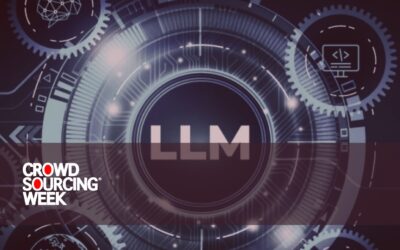This blog covers five of the smaller, specialist creator economy advertising platforms: BILI Social, 90 seconds, Billo, MOFILM, and Hashtag Paid.
What is Crowdsourcing?
There are various definitions of crowdsourcing, as given by the likes of Investopedia, HeroX and Sprout Social. Our is: “Crowdsourcing is the practice of engaging a ‘crowd’ or group to achieve a common goal — often innovation, problem solving, or efficiency.” Our crowdsourcing examples show it can take place on many different levels and across various industries. Thanks to our growing connectivity, it is now easier than ever for individuals to collectively contribute — whether with ideas, time, expertise, or funds — to a project or cause. This collective mobilization delivers the benefits of crowdsourcing.
The crowdsourcing phenomenon provides organizations with access to new ideas and solutions, deeper consumer engagement, opportunities for co-creation, optimization of tasks, and better value/reduced costs. The Internet and social media have brought organizations closer to their stakeholders, laying the groundwork for new ways of collaborating and creating value together like never before.
The Crowdsourcing Timeline
James Surowiecki’s book “Wisdom of the Crowds” was first published in 2004, and promoted the idea that large groups of people can be smarter than a few individuals, no matter how brilliant they may be. The phrase “crowdsourcing” then first appeared in a Wired article by Jeff Howe in 2006. His book, Crowdsourcing, was published in 2008.
In 2012, The New York Times printed: “Crowds are a hit. Millions of people, connected by the Internet, are contributing ideas and information to projects big and small. Crowdsourcing, as it is called, is helping to solve tricky problems and providing localized information. And with the right knowledge, contributing to the crowd — and using its wisdom — is easier than ever.”
This encapsulates the start of online crowdsourcing as we know it today. However, like many things, crowdsourcing existed way before the digital age of personal computers and smartphones. Check out our full Crowdsourcing Timeline.
Where Can Crowdsourcing Be Applied?
Crowdsourcing touches across all social and business interactions. It is changing the way we work, hire, research, make and market. Governments are applying the benefits of crowdsourcing to empower citizens and give a greater voice to the people. In science and health care, it can democratize problem solving and accelerate innovation. With education, it has the potential to revolutionize the system, just as crowdfunding is currently challenging traditional banking and investing processes. It’s a 21st-century mindset to collaborate more, rather than single-mindedly compete, and an approach that can be applied in many areas and many ways to:

Accelerate Innovation
Share Ideas
Reinvent Business Models
Co-Create
Engage Consumers or Citizens
Reinvent Work Models
Save Cost
Increase Efficiency
Reinvent Financial Models
What can be crowdsourced?
The short answer is, a collaborative or crowd-centric approach can be applied to everything. Take LEGO, for example. Today it is acknowledged as a highly successful global brand. Yet in 2004 it was heading for bankruptcy. LEGO’s turnaround came from turning to its fans and loyal supporters through product co-creation initiatives, which are then vetted by a wider audience through a crowdfunding mechanism. Here are further examples of crowdsourcing in ten business sectors/industries where it has had significant impact and offers huge potential:
Enterprise
e.g. Amazon Mechanical Turk, Clickworker, Mozilla
Education
e.g. MOOCs (Massive Open Online Courses)
Information
e.g. Wikipedia, open innovation
Internet of Things
Crowdsourcing to develop ideas and test products
Entrepreneurship
Improving business efficiency and effectiveness of product development, product validation, funding, and talent acquisition
Finance
Crowdfunding – whether donations, reward-based, equity or P2P loans
Marketing
Generating product ideas and feedback, plus user generated content, from customers, influencers, and other creators
Science & Health
Tapping collective intelligence, often of non-specialist citizen scientists
AI and Deep Learning
Often trained on crowdsourced data for cultural and linguistic diversity at affordable scale
Crowdsourcing & the Future Dynamics of Business
A very recent development has stemmed from the convergence of crowdsourcing, the gig economy, artificial intelligence, and Web3 built on blockchain. Crowdsourcing often requires crowds of gig economy workers to provide information or complete tasks. Their input has to be verified for any payments to be made from a centralized source. Payment can now be automated through smart contracts, with payment triggered by receipt of data that represents task completion, confirming when predetermined terms and conditions have been met. This transparency creates trustless transactions in which all stakeholders know the terms under which payment will be definitely made.
Beyond simple gig economy opportunities, the uses of Decentralized Physical Infrastructure Networks, or DePINs, as they have been named, can extend to running major city infrastructure on a smart city basis, including the automated crowdsourcing of data to monitor and control city energy usage, water supplies, and transport systems. Use the link for a more detailed explanation of this major advance in crowdsourced problem solving and resource management.
So how can this phenomenon work for organizations? The benefits of crowdsourcing as a work model, financial model, and business model are here to stay. Leveraging collaborative practices and tools leads to disruptive business implications and transformative innovations. If existing enterprises are not prepared to adapt and embrace this new opportunity they will be disrupted, as our crowdsourcing examples demonstrate. Knowledge and understanding of collaborative business practices will be a required skill for C-level suite executives and entrepreneurs.
Read Articles
How to Power Next Generation LLM Data with Proven Crowdsourcing
Check out how crowdsourcing provides scalable access to LLM data and expertise needed for training and fine-tuning Large Language Models.
Crowdsourced Market Research (Part 2): 5 Best Practices
We explore 5 must-know research best practices to crowdsource, improve market performance, and find innovative solutions to drive results.



